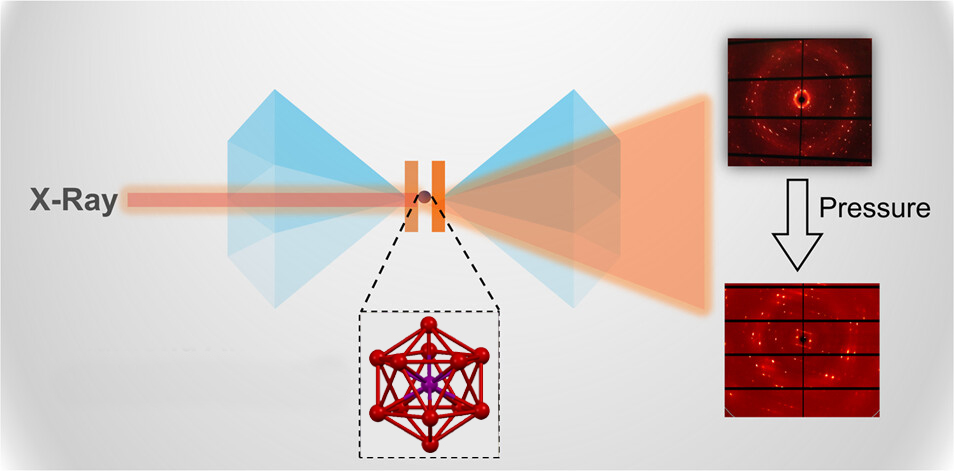Metal nanoclusters are an interesting class of material because they have unusual properties such as optical luminescence. If you hit them with light, they emit light of a different wavelength, a property that typically belongs to semiconductors, as opposed to nanoclusters of metallic atoms.
This is of interest for fundamental reasons as well as for applications like diagnostic or therapeutic imaging, or to initiate photocuring (hardening) of raw material for 3D printing. However, one hurdle to designing nanocluster structures with desirable optical properties is that it’s hard to predict optical properties for a given structure, because the way the atoms are bonded together makes a big difference.
“This project was about using pressure to modify the structure and then probe the optical properties,” said Stanford University’s Wendy Gu, lead author of the study. “You’re not changing the atomic bonding, just squeezing it a little bit so we can see, as we make this gradual change, how the properties will change.”
Gu and colleagues performed single-crystal x-ray diffraction at Advanced Light Source Beamline 12.2.2. To apply pressure, they used a diamond-anvil cell setup with a wide-angle opening designed by beamline scientist Bora Kalkan. This was important because solving the structures of gold nanoclusters, which have large unit cells and low symmetry, necessitates the acquisition of large numbers of diffraction spots from a wide range of angles. The results revealed that the bond lengths don’t change equally in all directions—some are compressed while others expand.
The researchers then applied pressure to nanoclusters in the lab and observed changes in the clusters’ optical properties. They found a blue-shift in photoluminescence and an increase in intensity with increasing pressure. Theoretical calculations that took the structure–property data into account ascribed the blue-shift to molecular orbital symmetry and the increased intensity to geometric constraints.
“This single-crystal high-pressure technique hopefully can be useful to other groups as well,” said Gu. “We tried it on one nanocluster, but there’s literally hundreds of others to try just in this class of materials. We can easily think about expanding into other complex nanoparticles, organic molecules, or inorganic complexes.”

Q. Li, C.J. Zeman IV, B. Kalkan, K. Kirschbaum, C.G. Gianopoulos, A. Parakh, D. Doan, A.C. Lee, J. Kulikowski, G.C. Schatz, G. Shen, M. Kunz, and X.W. Gu, “Direct Observation of the Pressure-Induced Structural Variation in Gold Nanoclusters and the Correlated Optical Response,” Nano Lett. 23, 132 (2022), doi:10.1021/acs.nanolett.2c03759.